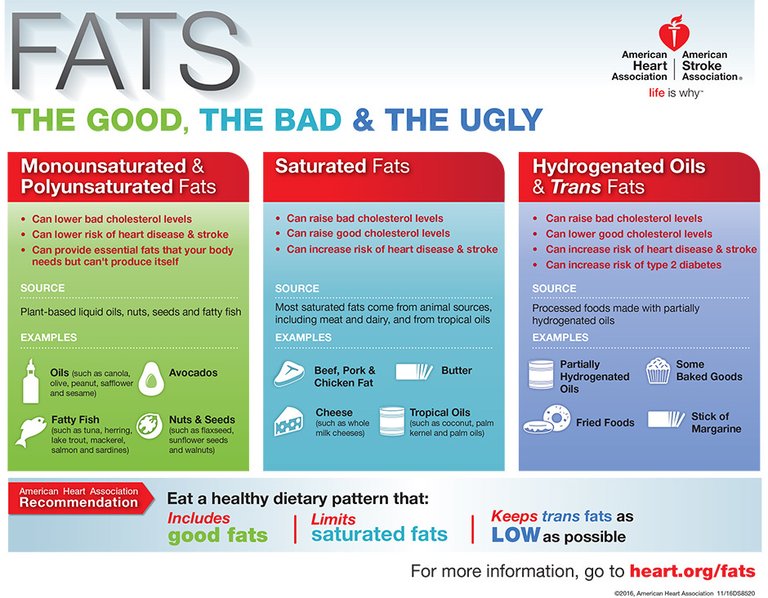Fats are good for the healthy diet. Good fats are needed for the brain, heart, nerves, cells, and hormones to function properly. They are also needed for hair, skin, and nails. Fats also help to create the full feeling. The important thing is to know the right kind of fats to consume in a healthy diet.

Bad fats are saturated fats found in animal sources such as red meat and whole milk dairy products. The bad fat raises the cholesterol increases the risk of heart disease. To avoid the bad fats, eat lean meats, skinless poultry, fish, nuts, and low-fat dairy products.
Trans fat or unsaturated fat is bad fats. They raise the bad cholesterol increasing heart disease as well as reducing the good cholesterol. Trans fat can be found in vegetable shortenings, margarine, crackers, candy, cookies, snack foods, fried foods, processed foods, and baked goods.
Monounsaturated fats are good fats found in avocados, almonds, hazelnuts, pecans, sesame seeds, and pumpkin seeds. They are also in canola oil, peanut oil, and olive oil. It is shown to lower the risks of cardiovascular disease when added to the diet.
Polyunsaturated fats are good fats high in Omega 3 and Omega 6 the fatty acids the body needs but cannot produce. They are found in cold-water fish and fish oils. They are also found in walnuts, sunflower, corn, soybeans, and flax seed oils. Acids help promote healthy moods and prevent dementia. It is very important to know that oils become unhealthy when they are heated since they release free radicals that lead to disease.
To know how much fat is too much depends on your individual lifestyle, weight, age and the state of your health. It is important to concentrate on monounsaturated and polyunsaturated fats in the diet for maintaining a higher quality of health. It is recommended to keep the total fat intake to 20-35% of daily calories, limit saturated fats to less than 10% of the total calories, maintain trans fats to 1% of total calories, and limit cholesterol to 300 mg per day.
It is important to concentrate on foods rich in Omega 3 to reduce cardiovascular disease. Add foods rich in Omega 3 that include salmon, herring, mackerel, anchovies, sardines, as well as tuna and lake trout based on the way they were processed.
Some people avoid seafood since they fear the mercury but seafood is good for the sources of Omega 3 and should be considered as a good source of the essential acids the body needs.
Learning to consume good fats instead of bad fats will improve your overall health so it is advisable to change the fats within your diet to have optimal health.